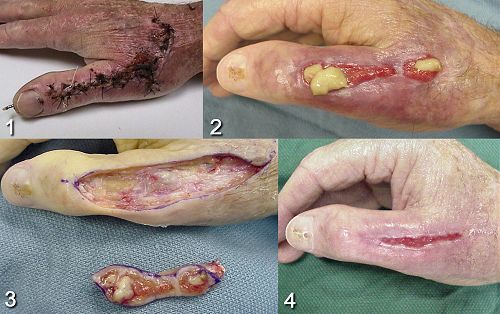

Figure Legend: Crush and avulsion wounds
typically have combined effects of indeterminate or inadequate vascularity
and widespread contamination. Infection following such wounds is due to
inadequate debridement, and primary wound closure increases the chance
of marginal wound necrosis. This patient presented after primary
closure of a dorsal hand crush-avulsion injury in which the extensor pollicis
longus had been repaired. The wound margins became necrotic (1) and
the extensor pollicis longus tendon underwent a progressive septic liquifaction
necrosis (2). He was treated with wide debridement (3), and then
was lost to follow up. He performed his own wound care and healed
uneventfully with the wound nearly closed one month after debridement (4).
| e-Hand | Go Back | Search | Textbook |